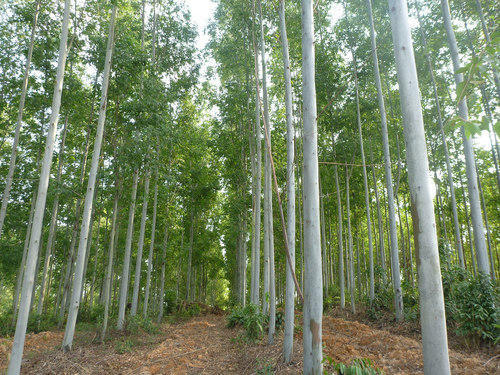By Spy Uganda
Kampala: Eucalyptus farming is gaining popularity gradually. It is a medicinal/herbal crop and the leaves and oil are used for making medicine. If you have land, then commercial cultivation of eucalyptus can be a good and profitable agribusiness for you.
Starting both small scale and commercial eucalyptus farming is very easy and simple. The eucalyptus trees generally require less care and other management, and they grow well in all types of environments following the steps below;
Select Good Location
You have to select a good location for starting your eucalyptus farming business. The eucalyptus trees generally grow well in almost all types of soil. But the availability of full sun is very important.
Deep, organic content-rich and well-drained loamy soils with sufficient moisture content are considered best for eucalyptus cultivation. The growth will stagnate on poor heavy, sandy soils, highly alkaline and saline soils.
Prepare The Soil
The land should be free from weeds and any previously cultivated crop roots. Several ploughings can make the soil to the fine tilth stage.
Plough the land about 3 months before planting the trees. Other land preparation activities such as ridging, harrowing and levelling should be completed early for monsoon plantation.
Climate Requirement For Eucalyptus Farming
The eucalyptus trees can be grown in a wide variety of climatic conditions. But they thrive best in tropical to temperate climatic areas.
The eucalyptus trees can be grown up to 2000 to 2200m altitude. They require between 4 cm and 40 cm annual rainfall for good growth.
They have a high degree of drought resistance, hence can be cultivated in drought areas and wastelands. They can be grown in regions with a temperature range of 0°C to 47°C.
Choose A Variety
There are several varieties of eucalyptus plants. The most common and popular eucalyptus varieties are Eucalyptus camaldulensis, FRI 4 and FRI 6, Eucalyptus globules and Eucalyptus citriodora.
Planting
The best time for plating the eucalyptus transplant is from June to October.
For high density planting select spacing of 1.5m x 1.5m (plant population near about 1690 plant/acre) or 2m x 2m (near about 1200 plants/acre). For initial years, intercrops can be taken. When intercropping is done choose the wider spacing of 4m x 2m (near about 600) or 6m x 1.5m or 8m x 1m. Crops like turmeric and ginger or medicinal plants can be taken as intercrops. 2m x 2m is the most widely used spacing.
Caring
The eucalyptus plants generally require less caring and other management. Although, taking additional caring will help the plants to grow better. Here we are describing the caring process of eucalyptus farming.
Fertilizing
The seedlings are transplanted in the main field 3 to 5 months after sowing. Seedlings are planted in pits with the onset of the monsoon.
Apply neem-based nutrients along with Phosphate at the rate of 50 grams and vermicompost at the rate of 250 grams per pit during the time of planting. Neem based nutrients protect seedlings from termite damage.
In the first year apply 50gm of NPK fertilizer per plant. In the second year, apply NPK (17:17:17)@50gm per plant. Also, take hand weeding operation and keep a check on weed growth.
Watering
The eucalyptus plants generally require less water. Although, irrigation should be carried out as soon as seedlings are transplanted in the main field.
Drip irrigation can be adopted for keeping moisture content intact. However, a number of irrigation depends on the soil type, weather conditions and moisture content in the soil.
Although the eucalyptus is a drought-tolerant tree, irrigation should be provided for better growth and good production. Especially, water the plants during the summer or hot dry season.
Thinning & Pruning
Thinning and pruning are essential in the case of high-density plantations. Mechanical thinning should be done after the first year of planting. Remove the unwanted, weak and poor seedlings.
Thinning is actually done to get a large size and straight poles. An exact number of thinning operations depends on the objectives of the management.
In the case of clones, no thinning and pruning is required up to the harvesting stage. Pruning is required at the end of the second year or after the beginning of 3rd year.
Yield
Yield may vary depending on various factors. Yield depends upon farm management practices, plant density, climate etc. In 1m x 1m spacing, 25 tones per hectare in 4 years can be obtained. Whereas in 2m x 2m spacing, an average yield of 80 to 100 tonnes per hectare in 8 years can be expected.





